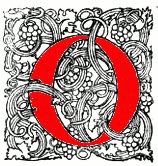
nly twenty miles due south of Charing Cross, the central pimple of London wen, as the crow flies, begins that unsophisticated and picturesque champaign country known to its inhabitants and to the few else who wot of it as the Weald of Surrey. . . . The great characteristics of the Surrey village are the green and the common. No county in England perhaps, except Yorkshire, Devonshire, and the Cumbrian shires, has so large a proportion of its area still unenclosed. As late as Queen Anne's day, Holmwood was a deer-forest, and its red-deer are mentioned by Defoe, who says “the largest stags have been hunted here that have been seen in England." For miles even now one may traverse the open heather and bracken along the sandstone hills: while on the plain itself the amount of open common always surprises the stranger in a Surrey district. The fact is, till very recently, land in Surrey had but a ridiculously small value. The county remained very sparsely inhabited, and the area for the most part was unfit for tillage. Hence every hamlet had its corner of green: and it is the existence of these universal cricket-fields at their very doors, with the consequent practice from early childhood, that has made the Surrey men into the champions of England. . . .
At its back the sandstone range rises sheer from the plain to the Deepdene woods or the old camp of Haustiebury (too often docked nowadays of its initial aspirate), but beneath stretches the long flat expanse of clay, a deep moist hollow, green with its own dampness in the driest summers, and justifying still by its numerous holly-bushes its ancient title of the Vale of Holmesdale. “It is a country," says its local laureate, Cobbett, “where, strictly speaking, only three things will grow well—grass, wheat, and oak-trees.” But the sturdy old rebel ought to have added the holly-tree to his list; for under its old English name of helm-bush it colours to this day the nomenclature of Holmwood and the whole Holmesdale district; while holly-bushes cut into antique shapes still give a certain quaint old-world beauty to the trim and formal Weald cottage gardens. . . . And how diverse they are in themselves, these Surrey farmhouses! What pleasing variety of individual fancy, so unlike the square and bare modern jerry-built tenement, put up by contract on a cheap stereoty pattern! Look for example at the arched gateway and mullioned windows of Crossways Farm near Abinger—a house that no doubt suggested to the greatest of living English novelists (who lives hard by) the title of the estate he bestowed upon his wayward Diana. Turn from that stately Elizabethan formality to the projecting timbered outline and picturesque gable-ends of Bonnet's at Ockley. Each in its way is perfect as a type of rural life yet how different the ways, how unlike the suggestions. The one calls up to the mind a graceful picture of ease and dignity, and a certain antique squirearchical splendour; the other is all redolent of rose, mary and lavender, all instinct with the deep rustic simplicity of Surrey. Lady Clare might stand at the door of the Crossways; neat-handed Phyllis, we are much more sure, braids her neat hair behind that latticed casement in the projecting first-floor front of Bonnet's. It is not without reason in the nature of things therefore that our artist puts a couple of dogs by the Elizabethan archway, while a flight of graceful swifts circle around the gables of the pargeted cottage.
Related Material
- The Weald’s Cold Damp Clay: The Influence of Surrey’s Geology upon Its History
- Cobbett’s Rural Rides the truest of all possible guides to unspoiled Surrey
- Surrey (homepage)
Bibliography
Allen, Grant. “Surrey Farmhouses.” Illustrated by W. Biscombe Gardner. span class ="book">The English Illustrated Magazine of Art. 6 (1888-1889): 155-71. Hathi Trust version of a copy in the Pennsylvania State University Library. Web. 6 March 2021
Last modified 7 March 2021